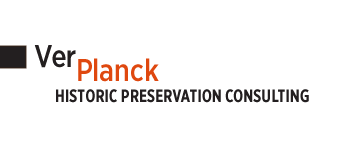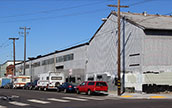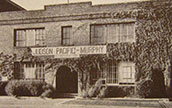

PROJECTS
Pacific Rolling Mill Co. Plant
LOCATION: 1200 17th Street, San Francisco, California
CLIENT: Potrero Partners
DATE COMPLETED: Underway
The former Pacific Rolling Mill Co. plant occupies a little under two square blocks in San Francisco's Potrero District. The complex, which was incrementally developed over a half a century, was established on the site as early as 1898, though the majority of the remaining structures were built in 1926. Pacific Rolling Mill Co. was one of San Francisco's most important fabricators of structural steel and the company had a hand in building many of the city's most prominent steel-frame skyscrapers, bridges, and department stores. The company was absorbed by two other manufacturers of structural steel before World War II, and in 1946 the plant closed. The facility was then leased by Owens-Illinois Glass Co., which completely rebuilt the formerly open-air sheds on the site as enclosed warehouses. The facility has been used for warehousing and file storage ever since.
In 2013, Potrero Partners, a partnership of Walden Development and the Prado Group, hired VerPlanck Historic Preservation Consulting to prepare a Historic Resource Evaluation (HRE) for the property. In addition to describing the five structures on the almost four-acre site, the HRE provides a detailed construction and alteration chronology for the property and evaluates the proposed project, which calls for the demolition of four of the five buildings on the site and their replacement with two new mixed-use buildings, for compliance with the Secretary of the Interior's Standards. VerPlanck consulted on the sensitive rehabilitation of the historic Pacific Rolling Mill Co. office building, an attractive two-story brick building, as a centerpiece of the project. Affected by neighborhood backlash stirred up by several other large development projects, the project sponsor has worked with VerPlanck to dispel incorrect information disseminated by a local group. VerPlanck countered the group's inaccurate arguments in written and verbal testimony to ensure that the project approvals were based on sound and impartial data. The HRE was used to prepare the Draft Environmental Impact Report which will be issued in early 2016.


